House of Cards:
A Conversation with Pablo Marín
By Dan Browne
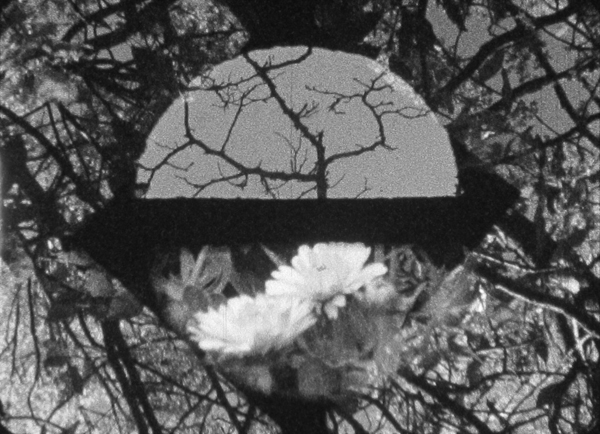 Resistfilm / Pablo Marín
Resistfilm / Pablo Marín
Pablo Marín is a filmmaker, editor, curator, teacher, writer and translator based in Buenos Aires, Argentina. He has presented Argentine experimental film programs in the United States, Canada, and Spain. He has translated the writings of John Waters, Manny Farber, and J. Hoberman into Spanish, as well as the first ever anthology of writings by Stan Brakhage, which was published in November 2014 under the title Por un arte de la visión. Marín is currently working on a project around Latin American experimental film for the Los Angeles Filmforum commissioned by the Getty Foundation, in addition to his first book, an anthology of essays on Argentinian experimental cinema. His films have premiered at the Oberhausen, Rotterdam and London Film Festivals and screened at the Austrian Film Museum, Anthology Film Archives, Pleasure Dome, (S8) Mostra de cinema periférico, Pacific Film Archive, San Francisco Cinematheque, Antimatter, TIE, CineCycle, Bafici, Mar del Plata Film Festival, and Buenos Aires Modern Art Museum, among others. In 2013, he was a visiting artist at the School of the Art Institute of Chicago and in 2014 was an artist-in-residence at the Liaison of Independent Filmmakers of Toronto (LIFT), where he completed his most recent work Resistfilm (2014). Before his departure, I sat down with him for brunch at Sadie’s Diner to discuss his creative practice and inspiration. The following is an edited transcript of that conversation.
* * *
Dan Browne: Can you discuss your reasons for choosing to produce works on film, given today’s predominantly digital media environment? Obviously it is a particular aesthetic, but it can also be more than that – a political choice, for example.
Pablo Marín: I don’t know if it’s entirely political, and I don’t want to say it’s philosophical either. It has more to do with the ideology of how the machine of cinema works. The process is very mechanical, very material, but at the same time very organic. I’m interested in thinking about film as a living form, a living organism, especially when I began to work with superimpositions, which is something I keep coming back to.
DB: When you’re breaking a Super 8 cartridge open and rewinding it by hand, as you’ve done in the process of creating superimpositions in many of your films, you’re interacting with the medium in a way that’s not possible with digital technology.
PM: Yes, that’s certainly a difference. But also this idea of film being a chemical format that you can wind or expose as many times as you like, and there’s always something that will be printed afterwards. In a way, film never says “enough.” You can keep shooting over and over on the same strip of film, and maybe you won’t see it very clearly, but there’s always something left. I’m interested in this format in which you can throw as many things as you like onto it and it will always respond to what you are putting through the lens, playing with light. I am not interested in the “video versus film” argument because I really like video as well, although I’ve never used it. Maybe I am so interested in superimpositions and in-camera editing because it is one of the few things that you cannot do when you are shooting on video. You have to record everything and then play it on a computer, for example, but there is no way you can be spontaneous about it and play with that.
DB: That’s true, I can’t think of any digital cameras that have such an option. There were some effects available on older camcorders, but they tended to be gimmicky. It could be possible with some type of mixing hardware, but it’s certainly more limited, and not possible to achieve the same fidelity of image.
PM: That’s another thing I like about film: you can do all these seriously complex visual things in a very easy way. With superimpositions, you have to go full circle in order to create it on video, you have to be really careful, and control it very well. But, with film you simply rewind it, that’s all it takes.
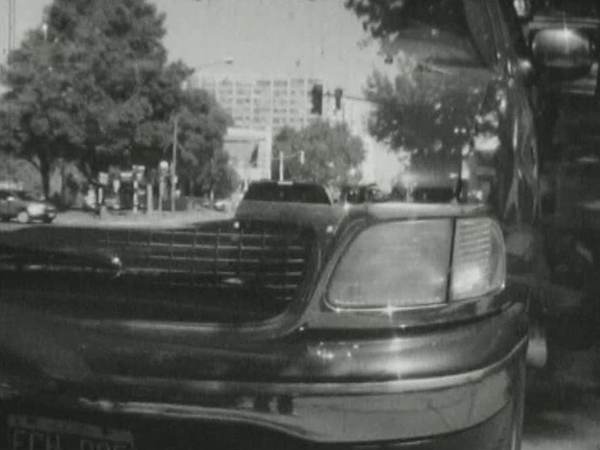
4x4 / Pablo Marín
DB: With digital overlays there is sometimes more technical control, but it can also be nice not to have that control, because then you are working with forces beyond your own personal taste of what images might look good together.
PM: Yes. Also there are a limited amount of decisions that exist with using film. I think the side of film that really interests me is the stupidly easy apparatus. I get to teach experimental film in Buenos Aires sometimes, and when I bring a projector into the classroom, people are amazed. “What is this weird thing?” they ask. And I am thinking that this is the most stupid apparatus ever, it just has this strip and then light goes through the strip, and that’s it. It still amazes me how film works, and the stock, this material that is sensitive to light.
I never studied filmmaking, so I also think I was drawn into film by the technology; it’s very deductive. If you see a camera, eventually you will start pressing buttons and getting a response from the machine. You find out that pressing a certain button makes a certain thing go around, whereas in digital you have no clue. For me, at least, there is no practical way of learning about it. I’ve always had this primitive fascination with the technology. I remember reading an essay by Pascal Bonitzer called “The Video Surface,” about the difference between video and film, and he quotes George Lucas as saying, “Film is this stupid material from the nineteenth century.” I see that as a very good thing about it. For me that’s one of the best definitions of film.
DB: Yes, it’s a technology that straddles both contemporary electrical forms but also the older, mechanical paradigm – two different modes, caught in the crossfire. So, what drew you into making films?
PM: Well, I studied film aesthetics and criticism – I’m a film critic as well. And then I started to see a historical correspondence between the people who were writing about experimental film and the people who were making it. The same people who were writing about it also got into the practice – crossing the line, in a way. I started, not to imitate this tradition, but to translate ideas I had in my mind onto film. I’m not saying that what I was doing hadn’t been done before, but I hadn’t seen it. I later discovered that I was up to the same things that some people were doing thirty years ago. I started making films that were one roll, Super 8 pieces, as a way of learning how to use the medium.
DB: And those were included among the works that you presented the other night in your retrospective at CineCycle?
PM: Yes, the first film in that programme, sin título (Focus) (2008), is the first film I ever shot. I had been making 35mm found footage things, and I was working with a camera at the same time as I was trying direct film techniques. But I started with that film, and eventually I had an untitled series of eight or nine works that are each a tiny idea, mostly about Super 8, pushing it into something that it’s not usually designed for. There still seems to be this idea of Super 8 being a home movie format, something used for just goofing around. People who use 16mm make serious work in that format; when they use Super 8 they make these sort of “quickie” things. Formally, it’s often not as rigorous.
DB: I was quite taken by how much time must have gone into all of the stroboscopic effects in Denkbilder (2013), and the different layers and dynamic images being used. Did you first have a planning stage that charted that out, before executing it?
PM: It’s two rolls of film. I don’t like the idea of shooting film for the sake of shooting film, and I feel that happens a lot in Super 8. So I try to make a plan, in a way. “Plan” is a big word, but with that film I started shooting in Berlin, with animals in the zoo. All of the background images are in Berlin, and I mostly shot with my hand in front of the lens, blocking parts and playing with which part of the frame is being exposed, and then I did the flickering elements in Buenos Aires, which are all personal images. It took a couple of months, but the work was maybe four days in Berlin making the backdrop, and then a few weeks in Argentina.
DB: So there are two completely different spaces superimposed on top of each other. That’s amazing, because it felt to me like the film conveyed a very specifically intimate sense of place, as if it was one unified space.
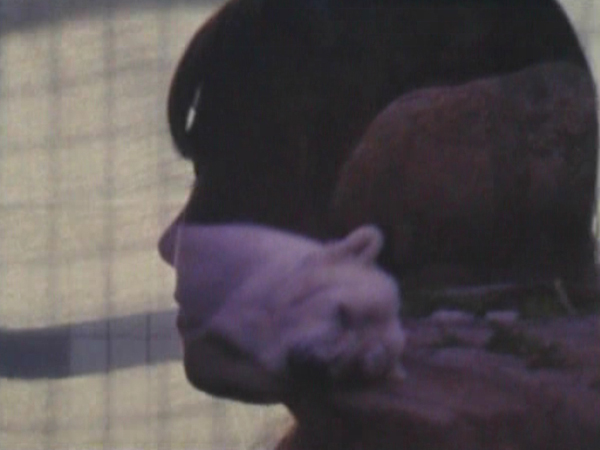
Denkbilder / Pablo Marín
PM: Well, I’m not showing any part of Buenos Aires specifically, I’m only working with details – leaves from the trees, etc. I wanted Berlin to be the main city of the film, because it plays on a genre of literature that Walter Benjamin championed in the first few decades of the 20th century, where descriptions of places and emotional points of view are mixed with very direct observation. The film is an adaptation of his book by the same title. So you get to see more of Berlin, and all that you see of Buenos Aires are details, like close friends…
DB: And the steak on the barbecue?
PM: Yeah, I don’t know why I shot that. I liked the color.
DB: I thought it was interesting and surprising. And I was struck by thinking about it in relation to the comments you made after the screening, where you referred to the spiritualization of matter… It’s such a banal object, but there is a mystery surrounding its inclusion.
PM: Yes, I wanted to include things that are both intimate and part of daily life – a sandwich, a maté cup. I was trying to be very careful not to be super serious, to not make a Robert Beavers film where everything is so emotional, so greatly composed (which I love, by the way). I was watching the steak and really liked the texture of the image, and so I decided to get my camera out. I tried to choose images that I really cared about.
DB: In general, your films don’t have much editing at all. Is Resistfilm (2014) a continuation of that style? It seems as though there is a greater element of montage, but maybe that is just the way sequences build, since each one is self-contained.
PM: Yes, there are four rolls of film in that work and I didn’t splice anything out. I wanted to leave the black at the beginning and end of each roll because I like the structure, where you see the image, and then the film dives underwater, and then returns. Also, I didn’t think all of the weird masking techniques could relate to being spliced right next to one another – it would create too many jump cuts.
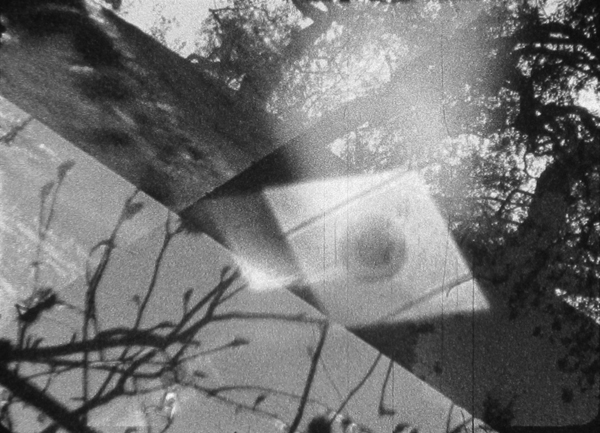
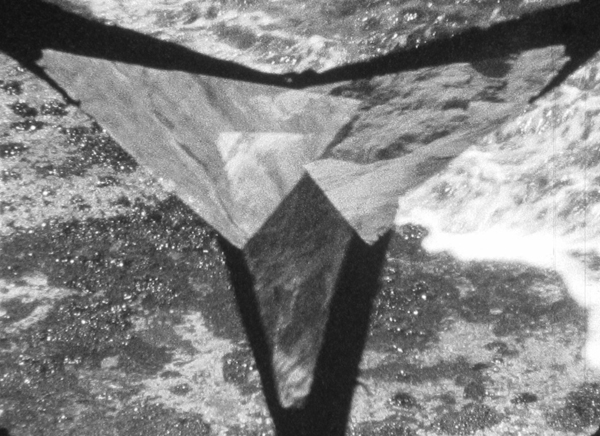
Frames from Resistfilm / Pablo Marín
DB: The masks build up over time. Can you explain the technique?
PM: It involves opening the gate, and can only be done on Super 8, because 16mm cameras have a pressure plate that cannot be altered without breaking the camera. In a way, each sequence uses the same structure of shooting. I’m interested in making films like a house of cards – building a layer, and then adding more layers to fill in the blanks. Each new layer is more specific and precise. I would mask one corner of the frame, shoot the whole roll, then rewind it, shoot another corner, and so on. I have to run the whole film through, even if I just shoot two frames, because of how I had marked the reference point on the film.
DB: That must be quite time consuming.
PM: For me, it’s easier to work that way than with another technique. Each of the layers I worked on over five days, so I would expose one layer, then another, and another. I was talking with Chris Kennedy [filmmaker and executive director of LIFT] about this, and we agreed that it can be much easier to shoot a film when you have a preconceived schedule established.
DB: And then you know when it’s done, whereas if you are building a structure in editing, there’s always the thought that you can change the arrangement or add or remove things – the permutations can become infinite.
PM: That’s also what I like about working in-camera. I know that when I am taking the film to the lab, I am done and these guys are going to do the work and take care of it. So Resistfilm was much easier to do than Denkbilder or Diario colorado (2010), which were more organic and intuitive, in the sense that I was never sure when they were done. I get to a point where I say “that’s it, I’m going to take the film to the lab,” because I don’t want to deal with it anymore, but that film could easily have another layer and maybe it would be better.
DB: When you’re working with superimpositions in that way, you are simultaneously creating and destroying at the same time. In burning additional images into the existing images you’ve already taken, you’re irreparably altering them, so you have to be very committed.
PM: Creating and destroying, that’s beautiful. Yes, there’s no turning back.
DB: At the same time, as you said, the film can just keep taking all of the layers, so it becomes hard to say “stop.” But in Resistfilm, and also with sin título (Parte tres) (2009), where the frame is organized into a triptych, the technique is more like paint-by-numbers, where you’ve arranged a spatial grid, and then you color it in with sections of light.
PM: Yes, there’s one part in that film where I thought to do all stop motion layers, so they are all suddenly flickering together. The only preconceived idea was that the top layer would be the sky, the bottom layer the ground, and the middle, everything else. It’s very simple.
DB: But it produces very complex combinations of textures, spaces, temporalities. Were you conscious of the flow of images, or did you just fill the roll?
PM: Most of the film was shot sequentially, so I would make notes with the film counter, as to the frame rate, what was shot at day or night. But it was very minimal. The film counter was not precise – only a line divided in four parts, and the time for each section changed as the roll ran out. 4x4 (2012) is divided into four big sections with one central episode, and I was shooting based on those counter lines. That film also relates to the idea of the house of cards: the four sections are separated by a black hole, and rewinding and making a transition image to fill in holes, like corridors to connect the sections.
DB: All of your films seem to have a specific location as the central focus. Sin título (Focus) features a Michael Snow-esque, axiomatic technique where you are zooming in each direction to interrogate the possibility of what can be seen there, while xoxo (2013) has a similar approach, but with panning instead. This is reflected in your later works as well, each in a different way. In Diario colorado, many of the shots are reminiscent of Brakhage’s Songs.
PM: Yes, I’m very much into his idea of democratic landscapes, I think it’s an interesting concept of how to make films in today’s world. So many films are trying to leave the world aside, and it’s interesting what can be done if you incorporate all the things that are in a given landscape, how the rhythms and visual structures tend to correlate with each other. Even though I don’t like the term “democratic landscape,” because I don’t know what it means to call what I’m making “democratic,” I like the thought behind it.
DB: Where you’re working almost in collaboration with your environment?
PM: Yes, if you’re going to portray your environment, I think it’s a good idea to incorporate all of the elements, because it can be very dynamic as well. In Diario colorado I think that all these recurrent things, like cars going by, really add something for me, instead of just being a film about nature.
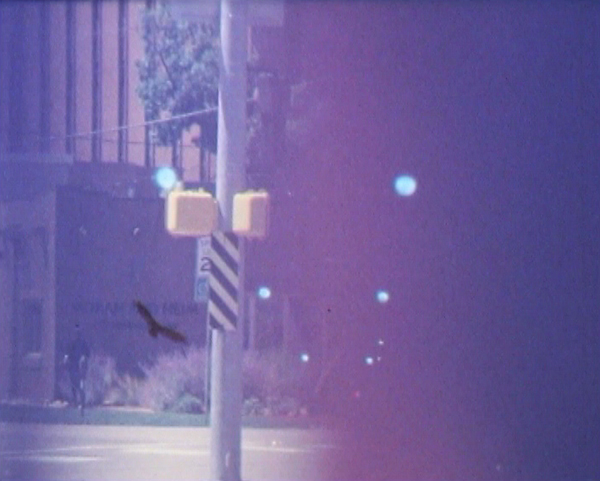
Diario colorado / Pablo Marín
DB: There are also some allusions to the city symphony form, personally refracted.
PM: Yes, I was shooting at night, so there are all of these traffic lights. That’s another interesting thing with the superimpositions: each layer adds something to the previous one. I like shooting things in low light because when you add a new layer it will imprint its own, but also enhance the other element. With superimposition you need to be very aware of what you are shooting in the moment, but also what you shot before, and what you will shoot later on.
DB: Are you conscious of whether you use one part of the frame, to leave it open for another part? Such as in Denkbilder, where you are masking certain things with your hand – it’s a lot to keep in your head, when you have no visual reference beyond your memory while shooting.
PM: With that film, the only concern I had was to leave the balloon at the end untouched. I shot that on the very last day in Berlin, then rewound the film in the camera and shot it again with a transition. I knew I wanted that piece of footage to be the closing segment, and didn’t want to mess it up by adding something on top. I’m always very careful about the beginnings and endings. With the new film as well, there is a star at the end. I wanted to begin and end the film with a straightforward image.
DB: It reminds me of a statement in Zen, that when you first set out on the path, mountains are mountains and rivers are rivers. When you are further along the journey mountains are no longer mountains, and rivers are no longer rivers, but once you have arrived, mountains are again mountains, and rivers once again rivers…
PM: The point of view has changed.
DB: Yes, you’ve changed – I think it is something going on with many of these simple images and what you’re asking people to do in your films. You’re more interested in getting them to look at it in a new way than showing something new per se.
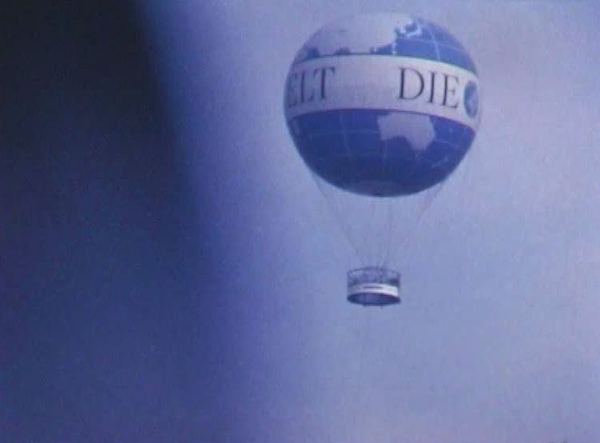
Denkbilder / Pablo Marín
PM: I really admire the early avant-garde films, especially the one’s dealing with nature or industrial imagery, like H2O (Ralph Steiner, 1929) and Mechanical Principles (Ralph Steiner, 1930). There’s a huge aim in those films, which is a bet to try to express the poetic nature of things that are not precisely considered poetic, like a machine. I like this conception of true film being transformative – that after you finish seeing the film, you have another perspective of those very quotidian, everyday things. My films are perhaps more extreme, by crushing the landscape into tiny geometric forms.
I’m interested in making these extreme things, but I’m cautious to remain grounded, to maintain a human quality in what I put out. I’m interested in a structural approach, trying to break everything and see it from a different perspective, but I am also careful not to get overly caught up in this huge mathematical thing, or extreme cerebral thing. I try to make it more lyrical in a way.
DB: Resistfilm opens with an epitaph from a passage written by Brakhage:
Oh transparent hallucination, superimposition of image, mirage of movement, heroine of a thousand and one nights (Scheherazade must surely be the muse of this art), you obstruct the light, muddle the pure white beaded screen (it perspires) with your shuffling patterns.
Your use of this quote points to an interesting bridge between structural and lyrical poetic concerns in your work. You seem able to straddle both without overly committing to one, but you are definitely using structure in a way that is very different from someone like Brakhage, who opposed preconceived structures not only on aesthetic grounds, but even morally, in the sense that he felt it necessary for the artist to create wholly within the moment to be most responsive and present to their environment.
PM: I remember reading an argument between him, Ken Jacobs, Snow, and Mekas, where he attacked structural film in the sense that it is soulless, that you are going to shoot a film and deny your spontaneous approach to the world – you see something beautiful but you won’t shoot it because it is not in your plan.
DB: It has to do with coming to terms with embodiment, I think. Maybe that is another level of the democratic landscape – not merely the world around you, but how it influences your own self-awareness.
PM: Yes, of course. With regards to the democratic landscape, you mentioned the Songs. I was also thinking mainly of his Visions in Meditation series, which are for me his best films. You get the idea of why he could rant against structural film, because in seeing that approach you realize how much harder it can be to make films in that way. You have to trust yourself and that’s scary sometimes when you’re trying to make a film, because you’re never completely sure what you’re doing. Most of the time, at least, I am never sure.
DB: Do you plan out when you are going to make your films or to shoot them? Do you bring a camera when you travel – like to Toronto, for example?
PM: No, I didn’t, because I knew I would have to be working all the time completing Resistfilm. I try to take it slower now. I thought about making a new film as I was coming here, but said to myself: I have to finish this other film first. I took a camera out from LIFT but didn’t shoot anything. If I had, it would have been in a huge hurry, just for the sake of shooting something in Toronto, and I don’t want to do that. I was thinking of shooting a hockey game with all these weird lenses that I got from LIFT, macros and zoom lenses and all that… but I was so tired, I didn’t want to go to a hockey game with the camera and start dealing with people looking at me and stuff like that. Shooting a film in public space these days not only involves a whole array of aesthetic and logistical decisions, but also this sort of prepared speech about the technology you’re using. It’s easy to become interrupted by people and then have to play the role of a tech tour guide, you know?
DB: Did you know that you would make films in Colorado or Berlin, when you were going to those places?
PM: Yeah, I had already been to Berlin before making Denkbilder, and I was reading a book by [Walter] Benjamin called Berlin Childhoodaround 1900 – it’s his recollections about being a child in the 19th century. As I was reading the book, I was trying to think of places in Berlin that were still huge monuments to the 19th century. I was invited to the Oberhausen Film Festival, and I went just so that I could go to Berlin to shoot the film. In Colorado, I was invited to do a residency but didn’t have to produce any work. I had my camera, and it’s such an easy place to make a film because it’s so beautiful. The color is beautiful – it’s this intense landscape. The highways are built through the mountains – you are driving and there are these huge walls where the mountains are cut for the roads and cars to pass through. It really inspired me.
DB: In Buenos Aires, it seems like you are more inspired by the urban landscape. Is that just the result of living in the city? Do you ever go into the countryside?
PM: 4x4 and the rooftop films are all shot near my house. I’m trying to get out of those surroundings, because I have three films that are of the same landscape. I shot the last episode of Resistfilm near my house in the river, but it has footage from all over the Buenos Aires province, at beaches and the countryside – each segment is a from totally different place.
I am trying to go to this place in the south of Buenos Aires province called Sierra de la Ventana. It has the oldest rock formations on the entire planet, and I was thinking of doing something on 16mm there. I wanted to include something from there in this film, but since I was doing all these maskings it seemed like a waste of that landscape, just to break it, because it’s easy to fake landscape when you are doing these types of films.
DB: Right, you can shoot almost anything – it can be water in your bathtub.
PM: Exactly. I had a huge revelation in Chicago, where I showed one or two rolls of this film. I presented the film and was talking about this in-camera study of nature, and someone in the audience asked if the place where I was shooting had any importance to me. For him the piece was about the nature of film itself – the nature of superimpositions and the nature of light. That was a big revelation for me.
DB: Your manipulations with the shutter and gate make the construction of the image explicit, as well as making reference to the projector. I suppose that was all done before you included the Brakhage quote – did your desire to put that in grow out of that revelation?
PM: Yes, it was the last thing I added. I knew that my approach had changed, and then I read this quote and was totally into this idea of cinema being part mythical and part super-technological. The title of the film, Resistfilm, is also about film in a way, about how much light and how much image the film could take, and of course playing on the title of Brakhage’s Desistfilm (1954). I don’t have a title on the actual print, though. Titles are tricky.
DB: Do you like watching your own films?
PM: No, I hate it. I think it’s because you are seeing the whole process: shooting, editing… maybe you lost a really good section because you made a bad splice and the projector chewed your film. As the filmmaker you are really backstage while the film is onscreen, seeing the whole history of its completion. You’re forced to relive the experience every time, which with some films can be fun but with others can turn into something almost painful. That’s great too, in a way. Sometimes I say to myself I want to shoot a certain place or action to remember it forever, and there’s something true and serious about that link between film and memory. But yeah, there’s a German experimental filmmaker named Werner Nekes from the 1960s, he’s really good. He has this quote: “The hell for filmmakers is a place where they see their own films over and over again.” I agree with that.
DB: Although you think that we’d be making stuff that we want to see ourselves. But it doesn’t always work out that way.
PM: I think it’s true that that’s the main drive for making a film. To see what an idea looks like.
DB: What’s the scene like in Buenos Aires?
PM: There are lots of people shooting on Super 8 just for the sake of making a Super 8 movie; it becomes its own genre. There’s a lot of film being made, and 99% of it is on Super 8.
DB: Is that because it’s easier to process, or because of the cost aspect?
PM: Well, as I was saying, in my case what I was making could only be done in Super 8, but I’m getting tired of the limitations. You’re super rigorous about it, but then after screening the film one time you start to notice scratches – I’m beginning to see the need to have a negative. There’s also a size thing – it’s not designed for larger venues. Especially with these later films, they have so much detail that I want to screen them on a huge, bright surface.
DB: So you see yourself working in 16mm in the future, beyond blowing up Super 8 material, like with Resistfilm?
PM: Yes, I have a Bolex and a lot of stock. In the long term, I think it’s cheaper – you have a negative and can make a print for $50. At first Super 8 is cheaper, but then to blow it up you have to spend much more money for the process and the time involved. It can end up being more expensive than working in 16mm.
DB: Any thoughts on your trip here before you head home next week?
PM: I’m looking forward to being home, but at the same time, it’s so good out here. Traveling for work is different. I’ve learned a lot of new skills: 16mm neg cutting, the optical printer. Also, being able to spend an entire month on my work is great. Normally I have to do my job, which is teaching, and also working as an editor on catalogues and texts, so I’m basically working from home most of the time. Film is always the last thing that I do. I keep pushing it away… I don’t think I’ve ever been able to spend an entire month just working on film. It’s great – I am going to miss it.
DB: Well, hopefully you get a chance to do it again soon.
PM: Hopefully.
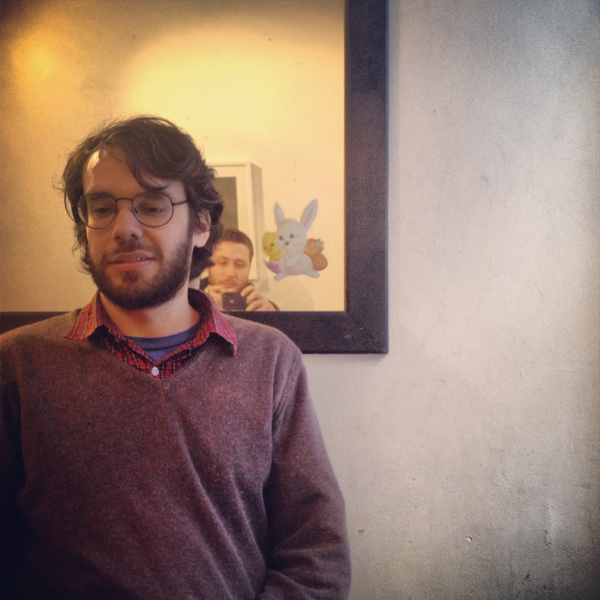 Pablo Marín / Photo: Dan Browne
Pablo Marín / Photo: Dan Browne
Published February 17, 2015
ABOUT THE AUTHOR
Dan Browne is a filmmaker, photographer and multimedia artist based in Toronto. His work has screened at numerous festivals and venues worldwide and has received several awards. He has recently published essays on Michael Snow in "The Five Senses of Canadian Cinema" (special edition of Brno Studies in English Journal, 2013), and Stephen Broomer in The Transformable Moment: The Films of Stephen Broomer (Canadian Film Institute, 2014).
